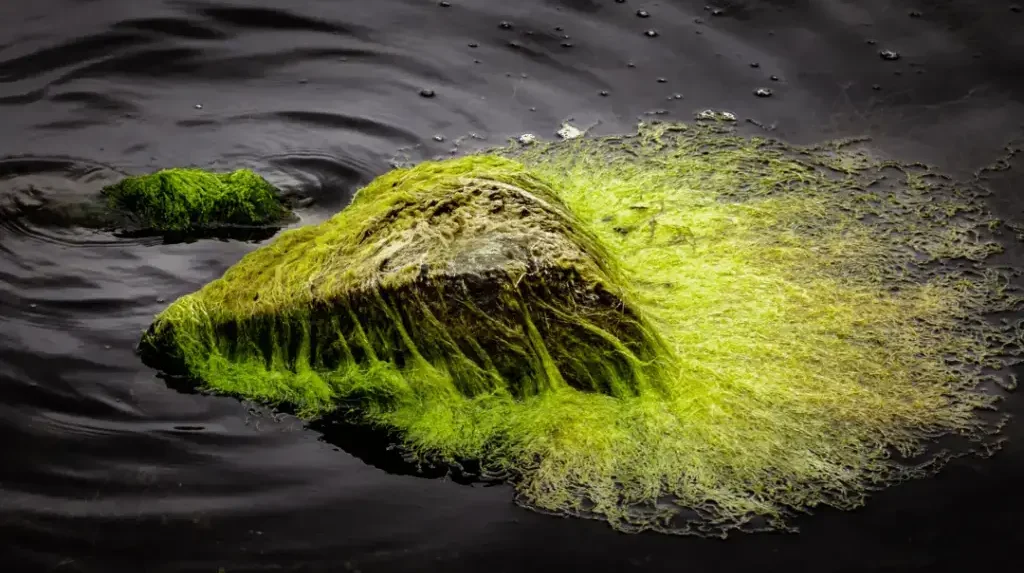Top 10 Troubled Lakes To Watch This Toxic Algae Season

The 2023 Harmful Algae Season Began Early, Infecting Lakes Across the U.S.
NEWS PROVIDED BY
EIN Presswire
Jun 05, 2023, 8:00 AM ET
WASHINGTON, DISTRICT OF COLUMBIA, UNITED STATES, June 5, 2023/EINPresswire.com/ — As temperatures heat up, health officials and water managers are on watch for harmful algal blooms. The all-too-familiar outbreaks of toxic blue-green algae arrived earlier than usual in parts of the U.S. this year. Today, water scientists with BlueGreen Water Technologies are releasing their list of the Top 10 Troubled Lakes To Watch This Toxic Algae Season.
“America’s lakes are national treasures,” said Eyal Harel, CEO, BlueGreen Water Technologies. “Yet, sadly, we see harmful algal blooms erupt on the same lakes year after year. These chronic outbreaks put people and their pets at risk, damage aquatic ecosystems, threaten drinking water supplies, and harm local economies. Toxic blooms must be treated early in the season to alleviate the threat and break this yearly pattern.”
Lakes provide habitat and support food webs for fish and wildlife. They serve as drinking water supplies, sustain local economies, and provide opportunities for tourism and recreation.
“Many of the lakes on this list are chronic repeat offenders,” said Dr. Jessica Frost, Scientific Director, BlueGreen. “But Lake Superior may come as a surprise, given the lake’s colder water temperatures are not as conducive to blooms. These blooms, though relatively minor, indicate a system that’s changing. So, we are keeping an eye on Lake Superior.”
In 2022, harmful algal blooms suffocated aquatic ecosystems, endangered human health, and proved fatal for pets and wildlife.
“Our 2023 list should serve as a wake-up call,” said Harel. “Harmful algal blooms are a growing global threat, with more frequent and intense outbreaks fueled by climate change. We encourage states to step up their monitoring, tracking, and treatment efforts.”
Top 10 Troubled Lakes to Watch This Toxic Algae Season
1. Mann Lake, Idaho:
On the remote and rugged western side of Idaho, in the shadow of Steen Mountain, trouble brews and toxic algae blooms on Mann Lake as temperatures rise. Every summer, as if on cue, the lake erupts into a glistening, harmful stew of blue-green. A popular hiking, camping, and fishing spot, the lake is plagued by outbreaks of toxic blue-green algae during the warmer months. In 2022, Idaho health officials issued advisories due to elevated levels of cyanotoxins. And in 2021, the Idaho Department of Environmental Quality closed the lake due to a severe outbreak. We are watching to see if 2023 will be any different.
2. Lake Elsinore, California:
Danger signs were already posted for Lake Elsinore in southern California before spring even arrived this year. The City of Lake Elsinore warned residents to stay away from the water due to high levels of toxins. The 3,000-acre lake is the largest natural freshwater lake in southern California and a popular destination for boating, kayaking, and fishing. Year after year, the lake has suffered harmful algal blooms, with seemingly no end in sight.
3. Milford Lake, Kansas:
Milford Lake is the largest man-made lake in Kansas, created in 1962 with the construction of the Milford Dam on the Republican River. It supplies drinking water for over 800,000 residents. Unfortunately, chronic harmful algal blooms bring recreational activities at Milford Lake to a standstill every summer. Kansas Department of Health and Environment officials say a perfect storm of warm temperatures, nutrients, and stagnant water is to blame for the yearly outbreaks of toxic algae.
4. Lake Okeechobee, Florida:
Toxic algal blooms erupt on Lake Okeechobee every year without fail. But this year, the lake saw its first blooms of the year in February – earlier than usual, and likely a harbinger of the season to come. By Memorial Day, NOAA had detected blue-green algae blooms covering more than one-third of the lake and the Florida Department of Health had issued health alerts for multiple locations around the lake.
5. Yahara Lakes, Wisconsin:
Toxic blue-green algae is already in full bloom on Lake Mendota in Madison, Wisconsin. The massive outbreak arrived earlier than usual this year, fueled by warm temperatures, heavy spring rains, and nutrient runoff. Swimmers have been told to stay away. Mendota is part of the Yahara chain of lakes, which are connected by the 62-mile-long Yahara River and also include Lakes Monona, Wingra, Waubesa, and Kegonsa. Typically, these lakes experience harmful algae blooms in July and August, but patches of algae arrived before Memorial Day this year, which is why we have listed the Yahara Lakes as one of our troubled Top 10.
6. Lady Bird Lake, Texas:
Lady Bird Lake, a river-like reservoir on the Colorado River, is located in Austin, Texas. Popular for rowing and kayaking, the lake has been taken over by harmful algal blooms every year since 2019, when several dogs died after coming into contact with infected water. Toxic algae has already been detected ahead of the 2023 summer season, making this one of our Top 10 troubled lakes to watch.
7. Lake Champlain, Vermont:
A beautiful freshwater lake located between Vermont and New York, Lake Champlain has struggled with algae outbreaks for years. Last summer, the Vermont beaches nestled along the lake were closed due to dangerous levels of toxins. With the impacts of climate change, these Champlain blooms have worsened and will likely become even more frequent.
8. Great Lakes, Wisconsin, Michigan:
The Great Lakes, one of the largest freshwater ecosystems in the world, spans from Minnesota to New York, as well as two Canadian provinces. Every year, harmful algal blooms take over a portion of Lake Erie and appear on Lake Michigan’s Green Bay and Lake Huron’s Saginaw Bay. Blooms on Lake Superior, the coldest of the Great Lakes, used to be unheard of until 2018 – and they’ve reappeared every year since.
But none of the Great Lakes experiences more outbreaks of toxic blue-green algae than western Lake Erie. The 2022 algae season on Lake Erie was worse than scientists had predicted. This summer, NOAA is predicting a moderate harmful algae season for Erie, reaching between 2 to 6 on the severity index. A level of 5 or above can pose risks to drinking water. We will be watching closely to see how much rain the region receives. A less severe outbreak would be likely if rain remains at or below average due to reduced runoff flowing into the lake.
9. Utah Lake, Utah:
Nutrient-fueled harmful algal blooms plague Utah’s largest freshwater lake every summer, without fail. In 2022, as in previous summers, the Utah Department of Environmental Quality declared the lake unsafe and urged people not to come into contact with the water. Surrounded by the Provo-Orem metro area, the shallow lake has been the focus of controversy over how to clean it up. We are hoping this troubled lake can be turned around, once and for all.
10. Lake Tahoe, California:
A popular tourist attraction, Lake Tahoe is a beautiful blue gem, a large freshwater body nestled among the Sierra Nevada Mountains. Unfortunately, Tahoe is no stranger to outbreaks of harmful algae. Every summer, parts of the lake become infested with toxic blue-green algae. Experts routinely check the water quality for harmful algae before popular holiday weekends, so check out the California Water Boards before planning your vacation. We are keeping an eye on this lake for trends and indicators of how weather patterns and nutrient flows are impacting America’s most treasured lakes.

